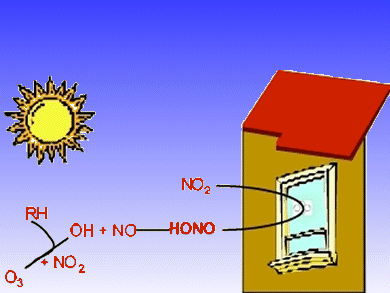Contaminants consisting of semi-volatile compounds and particles deposited on windows and buildings — usually called “urban grime” — may actively contribute to photochemical pollution, according to Barbara D’Anna and co-workers, University of Lyon, France. The team studied the influence of human activity on the local air quality of urban environments using a synthetic urban grime composed of pyrene and potassium nitrate.
Normally, the deposition of nitrate salts and nitric acid on surfaces is considered an irreversible process. To investigate this, the researchers studied the reactivity of gaseous NO2 both in the dark and under near-UV light and found that in the presence of pyrene, NO2 was readily converted into NO and HONO (an important precursor of HO radicals and NO).
After two hours, 60 % of the nitrate had been converted into HONO, clearly evidencing the key role of the photosensitizer (pyrene) in activating the process and demonstrating that nitrate can no longer be considered a reservoir or an “irreversible sink” for NOx species.
- Photoenhanced NO2 Loss on Simulated Urban Grime
R. Ammar, M. E. Monge, C. George, B. D’Anna,
ChemPhysChem 2010, 11.
DOI: 10.1002/cphc.201000540


